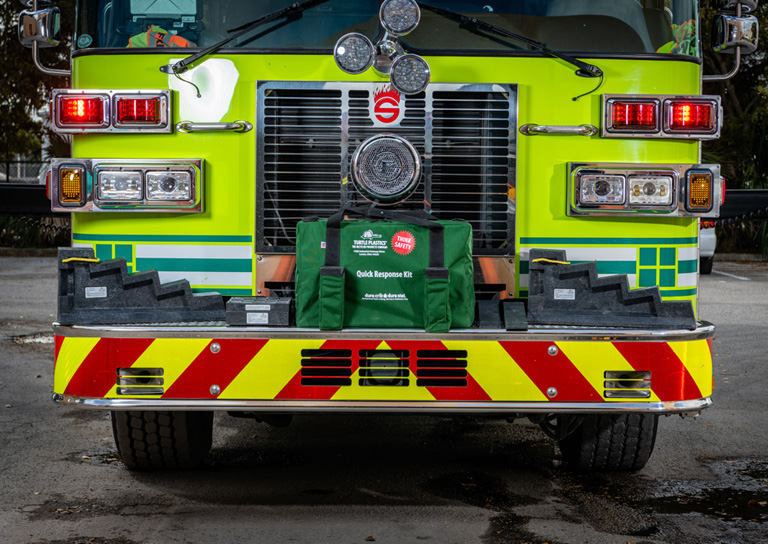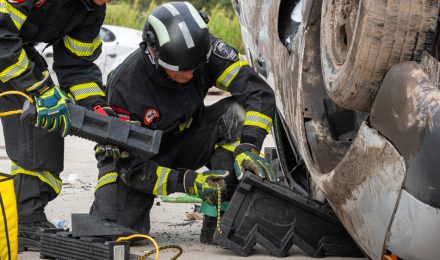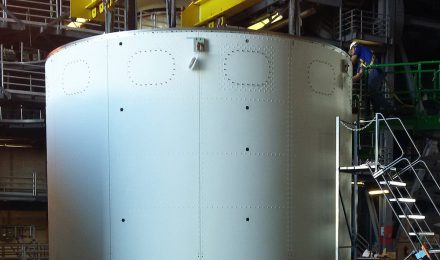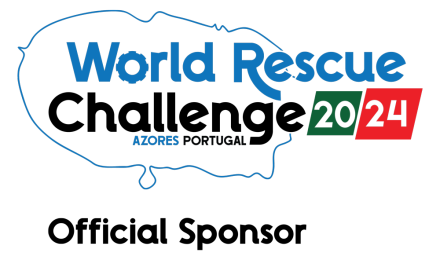Before rescue crews can safely remove a patient from a vehicle wreckage – and before they can employ pneumatic or hydraulic lifesaving tools to carefully pry the vehicle from around the occupant inside – they need to stabilize the vehicle. This requires “cribbing,” or the construction of a temporary structure to support the vehicle’s weight during the driver’s or passenger’s extrication.
Auto extraction and stabilization is the entire technical process from fire protection, power unit disengagement, vehicle security, patient security and treatment, removal of vehicle from patient, removal of patient, providing aid and transfer to ambulance .As a result of a collision, the vehicle may be in an unstable position or even upside down. Repositioning the vehicle typically isn’t an option, so rescuers need to stabilize it as it stands and do so in a safe and quick manner. This requires highly technical knowledge and tools/equipment.
Rescue cribbing without wood
While firefighters, emergency workers, and other first responders may use wood to create cribbing, wood has the potential to not only splinter when overburdened, but break during the process of extrication, causing potential harm to the rescuer and patient. Wood often degrades due to environmental factors and becomes contaminated from biohazards, chemicals, or glass at the site, which can make it less effective and safe for cribbing applications. Instead, many rescue professionals and technicians have made the choice to invest in engineered stabilization blocks, chocks and pads manufactured by Turtle Plastics.
Made from 100% recycled plastic, Turtle Plastics’ cribbing products are leading the way in safety for fire and rescue professionals as well as industrial and heavy equipment technicians who are utilizing a lifting component in their line of work. These engineered plastic products are often safer than wood for stabilizing either heavy equipment or at vehicle collisions, providing an effective ergonomic alternative that promotes environmental sustainability and adheres to zero-waste policies. They are washable, splinter-free, creosote-free, odor-free, and they are engineered using our propriety reliable and repeatable formula that ensures product consistency.
Designed for active loads
Our Dura Crib products have an interlocking design that not only assists in stabilization of equipment or autos, but the interlocking design enables the compliance of containment of hazardous energy created by pneumatic or hydraulic tools used during an “active load” maneuver. This hazardous energy containment is required under OSHA 29 CFR 191.147 LOTO. In addition, our material and product design provide predictability by identifying the pounds per square inch (psi) capacity and weight load limit of each product. Therefore, making the innovative Dura Crib products a safer alternative for most wood in auto extrication stabilization operations.
We have refined our Dura Crib family of products for over 20 years, resulting in a reliable, reproducible material that first responders and technicians can depend on when shoring or cribbing for stabilization maneuvers. Turtle Plastics produces more than a dozen different stabilization blocks, chocks, protection pads, that are essential for simple to complex challenges. Our Dura Crib products are made in the U.S.A. from 100% recycled plastic.
Learn more about Turtle Plastics’ Auto extraction, stabilization and stabilization products, including Dura Crib.






